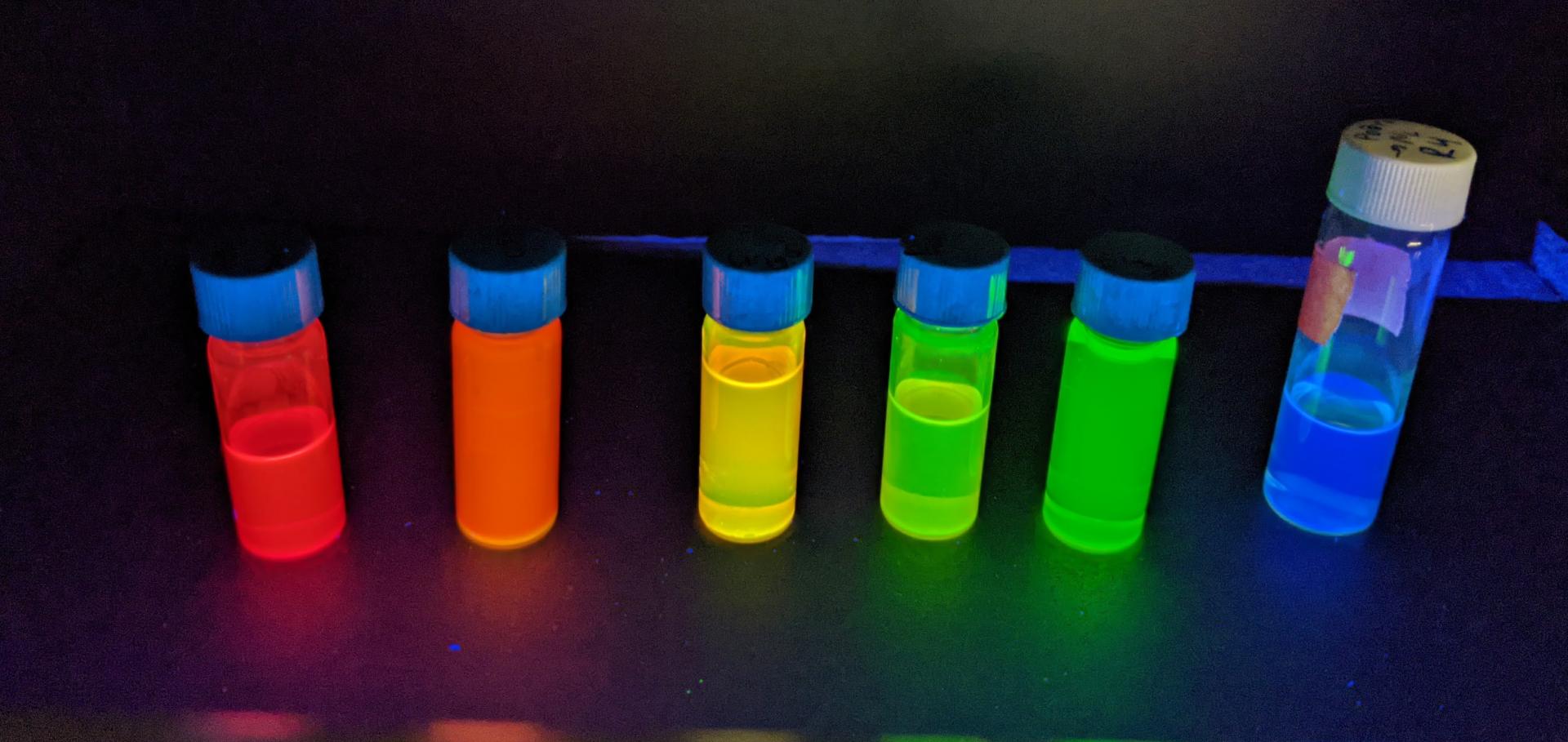Dimethylammonium: An A‐site Cation for Modifying CsPbI3
Solar RRL Wiley solr.202000599
A phosphine oxide route to formamidinium lead tribromide nanoparticles
Chemistry of Materials American Chemical Society 32:17 (2020) 7172-7180
Abstract:
We present the synthesis of formamidinium lead tribromide (FAPbBr3) perovskite nanocrystals through a phosphine oxide route, where in comparison to more traditional syntheses oleylamine is replaced with trioctylphosphine oxide (TOPO). This route has previously been shown to be successful for the inorganic cesium lead tribromide perovskite nanocrystals. We examine the interactions between the precursors via nuclear magnetic resonance spectroscopy (NMR). We confirm the existence of an interaction between FA-oleate and TOPO and use this to guide the optimization of our synthesis. When the reaction is conducted at room temperature, we observe the formation of nanoparticles with high photoluminescence quantum yield (PLQY, ∼70%) at 2.39 eV (518 nm) with little ripening or size defocusing over time. Although we obtain narrow emission peaks, the crystals are irregular in shape—a testament to the impact of the FA-oleate:TOPO interaction. Despite a drop in PLQY in the washed solutions, films made maintain a high PLQY of ∼50% at 2.33 eV (532 nm), which is fortuitously the ideal wavelength for the green emission channel in displays, and we demonstrate 532 nm electroluminescence in light-emitting diodes with an EQE of 3.7%.Quantum dot-induced phase stabilization of α-CsPbI3 perovskite for high-efficiency photovoltaics
Science American Association for the Advancement of Science 354:6308 (2016) 92-95
Abstract:
We show nanoscale phase stabilization of CsPbI3 quantum dots (QDs) to low temperatures that can be used as the active component of efficient optoelectronic devices. CsPbI3 is an all-inorganic analog to the hybrid organic cation halide perovskites, but the cubic phase of bulk CsPbI3 (α-CsPbI3)-the variant with desirable band gap-is only stable at high temperatures. We describe the formation of α-CsPbI3 QD films that are phase-stable for months in ambient air. The films exhibit long-range electronic transport and were used to fabricate colloidal perovskite QD photovoltaic cells with an open-circuit voltage of 1.23 volts and efficiency of 10.77%. These devices also function as light-emitting diodes with low turn-on voltage and tunable emission.CsI-antisolvent adduct formation in all-inorganic metal halide perovskites
Advanced Energy Materials Wiley 10:9 (2020) 1903365
Abstract:
The excellent optoelectronic properties demonstrated by hybrid organic/inorganic metal halide perovskites are all predicated on precisely controlling the exact nucleation and crystallization dynamics that occur during film formation. In general, high‐performance thin films are obtained by a method commonly called solvent engineering (or antisolvent quench) processing. The solvent engineering method removes excess solvent, but importantly leaves behind solvent that forms chemical adducts with the lead‐halide precursor salts. These adduct‐based precursor phases control nucleation and the growth of the polycrystalline domains. There has not yet been a comprehensive study comparing the various antisolvents used in different perovskite compositions containing cesium. In addition, there have been no reports of solvent engineering for high efficiency in all‐inorganic perovskites such as CsPbI3. In this work, inorganic perovskite composition CsPbI3 is specifically targeted and unique adducts formed between CsI and precursor solvents and antisolvents are found that have not been observed for other A‐site cation salts. These CsI adducts control nucleation more so than the PbI2–dimethyl sulfoxide (DMSO) adduct and demonstrate how the A‐site plays a significant role in crystallization. The use of methyl acetate (MeOAc) in this solvent engineering approach dictates crystallization through the formation of a CsI–MeOAc adduct and results in solar cells with a power conversion efficiency of 14.4%.Reactive Passivation of Wide-Bandgap Organic–Inorganic Perovskites with Benzylamine
Journal of the American Chemical Society American Chemical Society 146:40 (2024) 27405-27416


